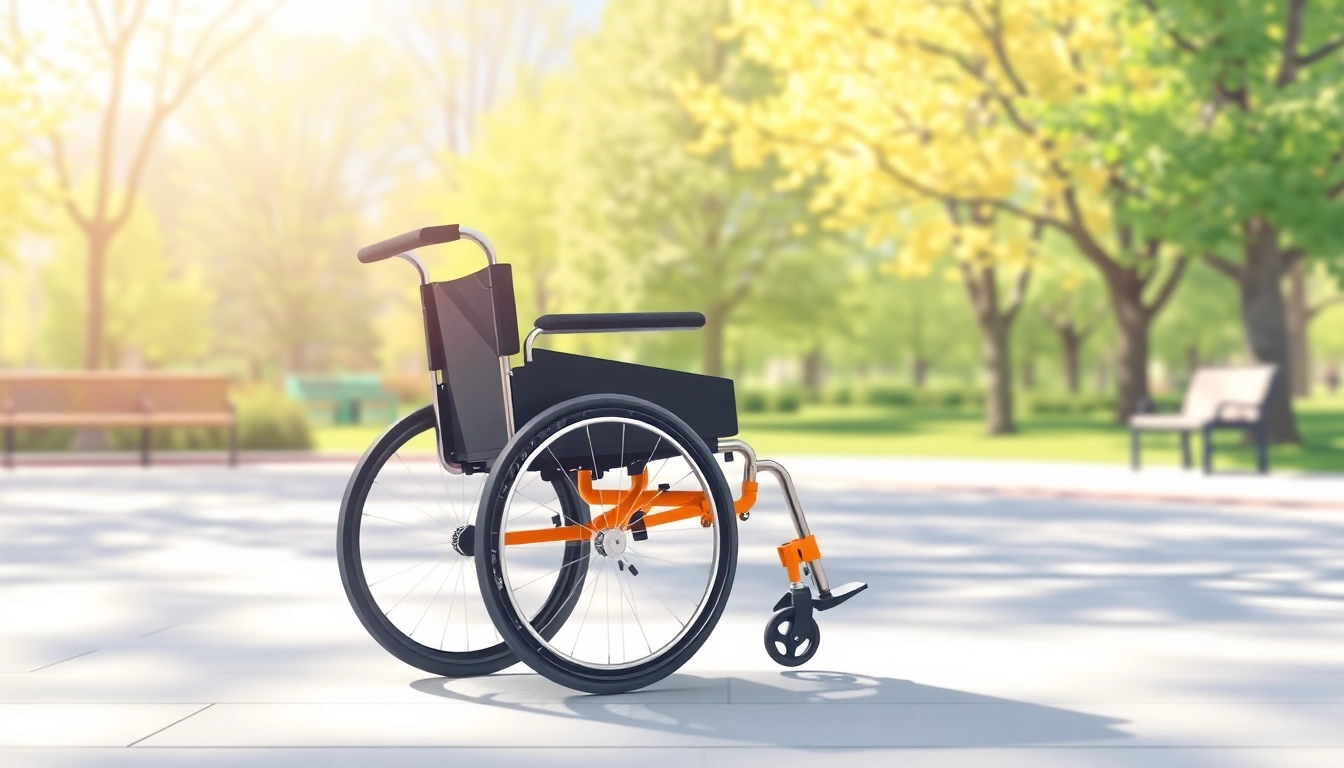1. Introduction to Manual Wheelchairs
Manual wheelchairs represent an essential mobility aid for many individuals, offering independence and freedom. These devices are designed not only for functionality but also to cater to users’ unique needs and preferences. As the world shifts towards inclusivity and accessibility, the importance of understanding manual wheelchairs becomes increasingly significant. In this article, we will explore the essentials of manual wheelchairs, including their features, benefits, selection criteria, and maintenance tips.
1.1 What is a Manual Wheelchair?
A manual wheelchair is a chair mounted on wheels that is propelled by the user or by a companion. Unlike electric wheelchairs that require a battery for power, manual models rely on human strength for movement. They vary widely in design to accommodate different body types, mobility levels, and environments, making them a versatile option for many users.
1.2 The Importance of Manual Wheelchair Accessibility
Accessibility plays a crucial role in enhancing the quality of life for individuals with mobility impairments. Manual wheelchairs ensure that more people can navigate their homes, communities, and workplaces without barriers. The ability to maneuver through tight spaces, use public transportation, and participate in social activities adds immense value to the lives of wheelchair users. As society becomes more aware of the need for inclusivity, manual wheelchairs contribute significantly to breaking down physical and psychological obstacles.
1.3 Common Misconceptions About Manual Wheelchairs
Despite their extensive use, several misconceptions persist about manual wheelchairs. One common myth is that they are only suitable for individuals with limited mobility. In reality, many active individuals use them for convenience and ease of transport. Another misconception is that manual wheelchairs lack the features or durability of electric models. However, advancements in materials and design have led to lightweight and highly durable options, making them just as effective for many users.
2. Key Features of Manual Wheelchairs
2.1 Ergonomic Design and Comfort
When selecting a manual wheelchair, ergonomic design is a critical factor in ensuring comfort for the user. Wheelchairs often come with adjustable seating, backrests, and armrests. These features allow customization to fit the user’s body, reducing the risk of pressure sores and increasing overall comfort during extended use. Some manual wheelchairs also offer cushioned seating or specialized fabrics to enhance the user experience further.
2.2 Durability and Weight Considerations
Durability is paramount when choosing a manual wheelchair. Users often face varied terrain, from smooth indoor surfaces to rough outdoor paths. Manual wheelchairs are typically constructed from robust materials, such as aluminum or titanium, to ensure longevity. Weight considerations also come into play; lightweight models are easier to transport and maneuver, making them a preferred choice for many users who require a device that is both sturdy and easy to handle.
2.3 Customization Options for Manual Wheelchairs
Customization is one of the standout features of manual wheelchairs. Users can select from a range of options, including frame color, wheel size, and additional accessories like storage pouches or cup holders. Customization not only enhances the wheelchair’s aesthetic appeal but also its functionality, allowing users to create a device that truly meets their personal needs and preferences. Tailored ergonomic adjustments can further improve posture and performance, making manual wheelchairs more effective for various lifestyles.
3. Benefits of Using a Manual Wheelchair
3.1 Health Benefits and Physical Activity
Using a manual wheelchair can positively affect a user’s health and physical well-being. Propelling a manual wheelchair requires upper body strength and coordination, serving as a form of exercise. Regular wheelchair use can enhance cardiovascular fitness, muscle strength, and flexibility. Some studies even suggest that wheelchair propulsion can reduce the risk of secondary health issues, such as obesity and cardiovascular disease, which is crucial for maintaining a healthy lifestyle.
3.2 Cost-Effectiveness Compared to Electric Wheelchairs
Manual wheelchairs typically present a more cost-effective solution than electric wheelchairs. The initial purchase price is significantly lower, making them accessible for a wider range of individuals. Additionally, manual wheelchairs don’t incur electricity costs, maintenance fees associated with batteries, or expensive repair costs that often come with electric models. This financial advantage allows users to allocate funds for other essential needs, such as therapy or home modifications for accessibility.
3.3 Enhanced Social Interaction and Mobility
One of the most notable benefits of manual wheelchairs is the enhancement of social interaction and mobility. Users can easily navigate various environments, from busy streets to tight indoor spaces, fostering greater engagement with their surroundings. This increased mobility can lead to improved social connections, as users can participate in community events, gatherings, and everyday activities with friends and loved ones, substantially enhancing their overall quality of life.
4. Choosing the Right Manual Wheelchair
4.1 Assessing Individual Needs and Preferences
Choosing the right manual wheelchair begins with a thorough assessment of the individual’s needs and preferences. Factors such as lifestyle, physical condition, and daily activities play a significant role in selection. For example, an individual who frequently navigates rough outdoor terrain might require a more robust wheelchair with larger wheels, while an urban user might prioritize a lightweight model for easy transport in public spaces.
4.2 Understanding Wheelchair Specifications
Understanding the specifications of a manual wheelchair is crucial for making an informed decision. Key specs include the chair’s weight, weight capacity, seat width, and overall dimensions. Users must ensure that the wheelchair fits their body comfortably and can support their weight while providing adequate space for movement. Features such as anti-tip wheels or footrests can also greatly enhance usability and safety.
4.3 Finding Reputable Suppliers and Resources
When looking to purchase a manual wheelchair, sourcing from reputable suppliers is essential. It’s advisable to consult with healthcare professionals and therapists who can provide insights based on their experience. Additionally, researching local suppliers and options for testing different wheelchair models can help users find a chair that meets their specific needs and guarantees service and support should any maintenance issues arise.
5. Maintenance and Care for Manual Wheelchairs
5.1 Regular Maintenance Tips
Regular maintenance is vital for maintaining the performance and longevity of manual wheelchairs. Users should routinely check the tire pressure and tread condition to ensure proper handling and safety. Lubricating the moving parts, such as bearings and brake mechanisms, can prevent wear and tear while ensuring smooth operation. Periodic cleaning of the frame and upholstery can also help maintain hygiene and durability.
5.2 Troubleshooting Common Issues
Users may encounter common issues with manual wheelchairs, such as flat tires or uneven wheel alignment. Having a basic understanding of how to troubleshoot these issues can save time and money. For instance, learning how to replace a tire or adjust the brakes can empower users to manage minor problems independently. Additionally, keeping a toolkit handy with essential tools can aid in quick repairs.
5.3 Importance of Proper Storage and Care
Proper storage and care greatly affect the lifespan of a manual wheelchair. Users should store their chairs in a dry environment to avoid rust and deterioration of materials. When not in use, consider protecting the wheelchair with a cover to prevent dust accumulation and exposure to harsh elements. Attention to these details will help uphold the wheelchair’s condition and reliability over time.



